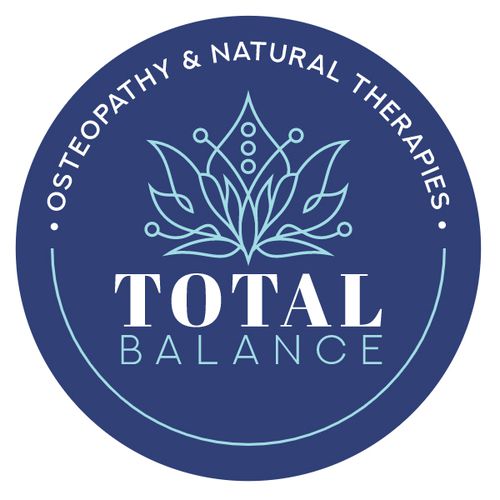
Deep tissue massage is a therapeutic technique that targets the deeper layers of muscles and connective tissue, particularly the fascia—the web-like structure that supports and surrounds muscles throughout the body. Unlike relaxation massages, it uses firm pressure and slow strokes to break down tight knots, adhesions, and chronic muscle tension.
Across Australia, deep tissue massage has gained traction as a go-to option for people managing sports injuries, postural strain, or persistent pain. Whether you’re recovering from a workout or dealing with day-to-day muscle tightness, many Australians are turning to this hands-on approach as part of their physical and emotional wellness routines.
However, it’s important to seek a qualified and experienced therapist. The wrong technique or pressure may cause more harm than good, especially if you have existing health concerns.
12 evidence-backed deep tissue massage benefits
Deep tissue massage does more than just relax your body—it can offer measurable results for pain relief, recovery, and movement. Below are 12 specific benefits supported by clinical research and practitioner experience in Australia.
1. Relieves chronic muscle tension
Deep tissue massage is particularly effective for chronic muscle tightness that doesn’t ease with lighter techniques. It uses slow, sustained pressure to reach the deeper layers of muscle and fascia, breaking up adhesions and releasing built-up tension. This approach is especially useful for:
-
Office workers with stiff necks and shoulders
-
Tradespeople experiencing overuse injuries
-
Athletes with tight hamstrings, calves, or back muscles
A randomised controlled study found that participants with musculoskeletal pain reported significant relief after deep tissue massage, reinforcing its role in long-term pain management.
2. Improves range of motion and flexibility
When muscles and connective tissues are tight or injured, mobility can suffer. Deep tissue massage helps by:
-
Breaking up scar tissue from previous injuries or surgeries
-
Lengthening muscle fibres and improving elasticity
-
Releasing tension around joints, especially in the hips, shoulders, and spine
-
Supporting physical therapy goals during rehabilitation
This makes it highly beneficial for people recovering from accidents or those with poor flexibility due to inactivity or posture-related strain.
3. Eases lower back pain
Lower back pain is one of the most common musculoskeletal issues among Australians, especially those in labour-intensive jobs or sedentary office roles. Deep tissue massage works by releasing muscle tightness around the lumbar spine, improving local circulation, and easing nerve compression that may contribute to discomfort.
According to a randomised clinical trial, deep tissue massage was found to significantly reduce pain in patients with chronic low back pain over a 10-day treatment period, making it a viable option for those seeking non-pharmacological support.
4. Speeds up recovery post-workout
Athletes and active individuals often use deep tissue massage as a tool for post-exercise recovery. It may help by:
-
Reducing delayed onset muscle soreness (DOMS)
-
Improving circulation to flush out lactic acid
-
Easing muscle stiffness after intense training
-
Preparing the body for upcoming physical demands
This recovery support is why many sports physios in Australia incorporate it into regular training programs.
5. Aids injury rehabilitation
Deep tissue massage is commonly used as part of a recovery plan for soft tissue injuries, including strains, sprains, or overuse conditions. It targets deeper layers of muscle and connective tissue to encourage circulation, improve oxygen delivery, and support the natural healing process. Many practitioners recommend it in the later stages of recovery, once inflammation has gone down.
Benefits in injury rehabilitation may include:
-
Improved blood flow to damaged tissues
-
Breakdown of scar tissue that limits mobility
-
Reduced stiffness around the injury site
-
Enhanced joint function through targeted muscle release
It's frequently combined with physiotherapy, chiropractic care, or osteopathy, forming part of a tailored rehab program that addresses not just the injury but also contributing muscle imbalances.
6. Reduces stress and cortisol levels
Beyond physical relief, deep tissue massage has a calming effect on the autonomic nervous system. By stimulating parasympathetic activity, it helps reduce mental and emotional stress beneficial for those juggling demanding schedules or managing burnout.
A study published in the Journal of Bodywork and Movement Therapies reported a measurable decrease in salivary cortisol levels following massage, pointing to its stress-lowering potential. This makes it especially useful for people experiencing chronic tension, poor sleep, or anxiety-related symptoms.
7. Improves postural imbalances
Prolonged sitting, screen time, and uneven workloads can all cause postural misalignment, particularly in the neck, shoulders, and lower back. Deep tissue massage helps correct these imbalances by releasing chronically tight muscles and restoring functional alignment.
Over time, this may relieve joint pressure and reduce the risk of long-term discomfort. It's especially beneficial for Australians with sedentary jobs or repetitive work routines.
8. May help with sciatica symptoms
Sciatica pain is often caused by tight muscles compressing the sciatic nerve, particularly the piriformis muscle in the hip. Deep tissue massage may help by:
-
Reducing muscle tension that contributes to nerve compression
-
Improving hip mobility and glute function
-
Relieving referred pain that travels down the leg
-
Supporting flexibility in surrounding areas to prevent flare-ups
While it’s not a cure, it can offer targeted relief when used alongside physiotherapy, stretching, or prescribed exercise programs.
9. Supports lymphatic drainage
According to the American Massage Therapy Association (AMTA), massage techniques can help support healthy lymph flow, which is essential for removing waste and maintaining immune function. While deep tissue massage is not the same as manual lymphatic drainage, it can still enhance circulation and tissue fluid movement, helping to stimulate the body’s natural detox process.
This can be particularly useful after:
-
Illness, when the immune system has been under strain
-
Surgery, to reduce swelling and encourage healing
-
Injury, where fluid retention and inflammation are common
Some therapists incorporate deep pressure with rhythmical movements to encourage drainage in affected areas. When combined with other supportive therapies, this can assist the body in returning to balance more efficiently.
For more on how massage supports detox and immune health, explore the full benefits of lymphatic drainage.
10. May lower blood pressure
For people managing mild hypertension, deep tissue massage may offer a helpful way to relax the body and mind. While it’s not a replacement for medication or medical advice, it can complement care by promoting vasodilation (widening of blood vessels) and reducing muscle tension, both of which may ease blood pressure over time.
As part of a broader wellness plan including exercise, diet, and stress management—deep massage can help the body shift into a more relaxed, regulated state. Always consult your GP before starting any new treatment if you have cardiovascular concerns.
11. Breaks up scar tissue
Whether caused by surgery, sports injuries, or repetitive strain, scar tissue can limit mobility and cause discomfort if left untreated. Deep tissue massage works to soften and break down adhesions within the muscles and fascia, improving the quality of the tissue over time.
This can lead to:
-
Smoother joint movement
-
Less stiffness or pain during activity
-
Better range of motion after recovery
Therapists often target scar tissue around common problem areas like the knees, shoulders, and lower back.
12. Boosts overall mental wellbeing
The Mayo Clinic Health System highlights how massage therapy, including deep tissue techniques, can positively affect mental health by easing symptoms of stress, anxiety, and depression. Massage encourages the release of neurotransmitters such as serotonin and dopamine, which help regulate mood and promote emotional balance.
In Australia, many people use massage as part of their mental wellness routine not just to ease physical tension but to create a sense of calm and groundedness. For those managing chronic pain, long-term stress, or emotional burnout, regular sessions can be a valuable self-care practice that supports both body and mind.
Accessing deep tissue massage in Australia
If you're considering deep tissue massage, it's important to find a qualified therapist with proper training in this specific technique. Look for practitioners who have completed accredited modality-specific training, hold relevant certifications or diplomas, and have experience working with issues like chronic pain or injury recovery.
Here are a few things to look for:
-
Accreditation or membership with a recognised professional body (e.g. Massage & Myotherapy Australia)
-
Experience with your specific needs, such as injury rehab or postural correction
-
Up-to-date training in deep tissue and remedial massage practices
Many therapists also follow ethical and hygiene standards that align with Australian industry guidelines. You may be eligible for private health insurance rebates, depending on your fund and level of cover—so it's worth checking before your first session.
Ready to try it? Find trusted deep tissue massage therapists near you on Natural Therapy Pages.
Safety and what to expect from a session
Deep tissue massage can feel intense especially in areas with built-up tension but it should never feel painful or unsafe. Mild soreness is common after your first session, but it typically eases within a day or two. Always communicate with your therapist about pressure levels, and don’t hesitate to ask for lighter pressure if you’re new or feeling uncomfortable.
This type of massage isn’t suitable for everyone. You should avoid or delay treatment if you have:
-
Blood clotting disorders or are taking blood thinners
-
Recent surgery or open wounds
-
Skin infections or active inflammation
-
Uncontrolled high blood pressure or heart conditions
If you’re unsure whether deep tissue massage is appropriate for you, speak with your GP or allied health provider first. A qualified therapist will also assess your health status before beginning any treatment to ensure it’s safe and tailored to your needs.
Wrapping up: is deep tissue massage right for you?
Deep tissue massage offers more than just muscle relief—it can support recovery, ease chronic pain, reduce stress, and help you move more freely. From improving posture to promoting emotional wellbeing, its benefits are well-rounded and increasingly backed by experience and research.
If you’re dealing with tension, injury, or simply looking to feel better in your body, it may be worth exploring this therapy with a qualified practitioner. Always choose someone with the right training and experience to ensure safe and effective results.
Want to upskill? Explore accredited massage therapy courses in Australia and learn how to deliver deep tissue techniques that make a real impact.
Originally published on Jun 09, 2025








